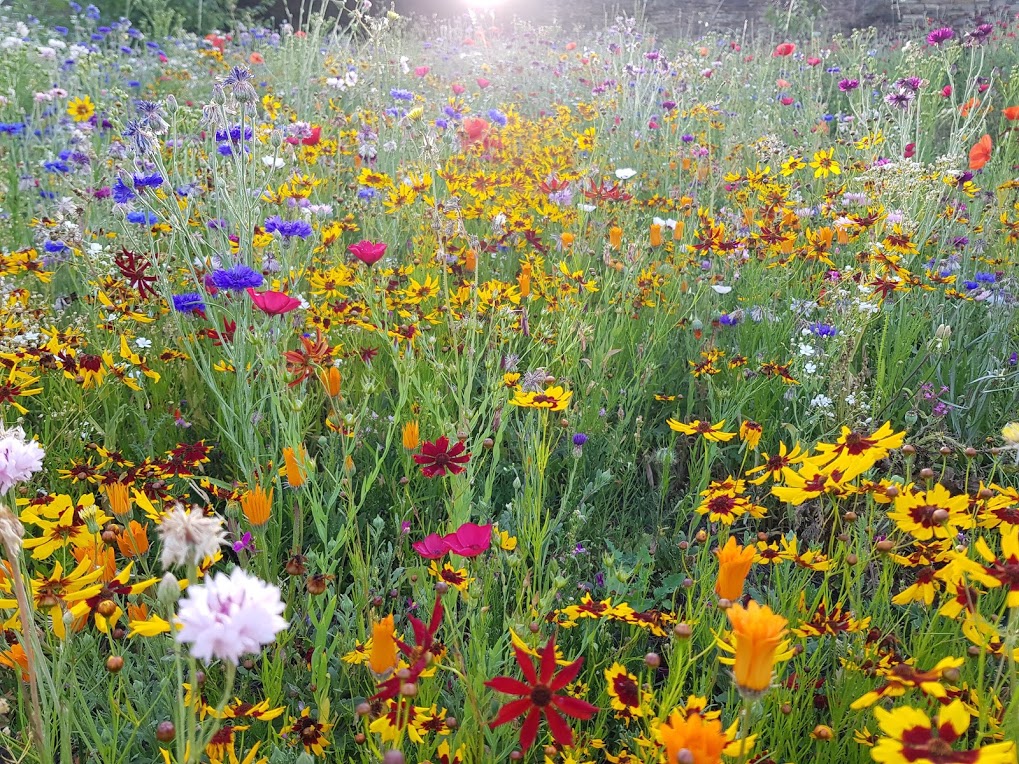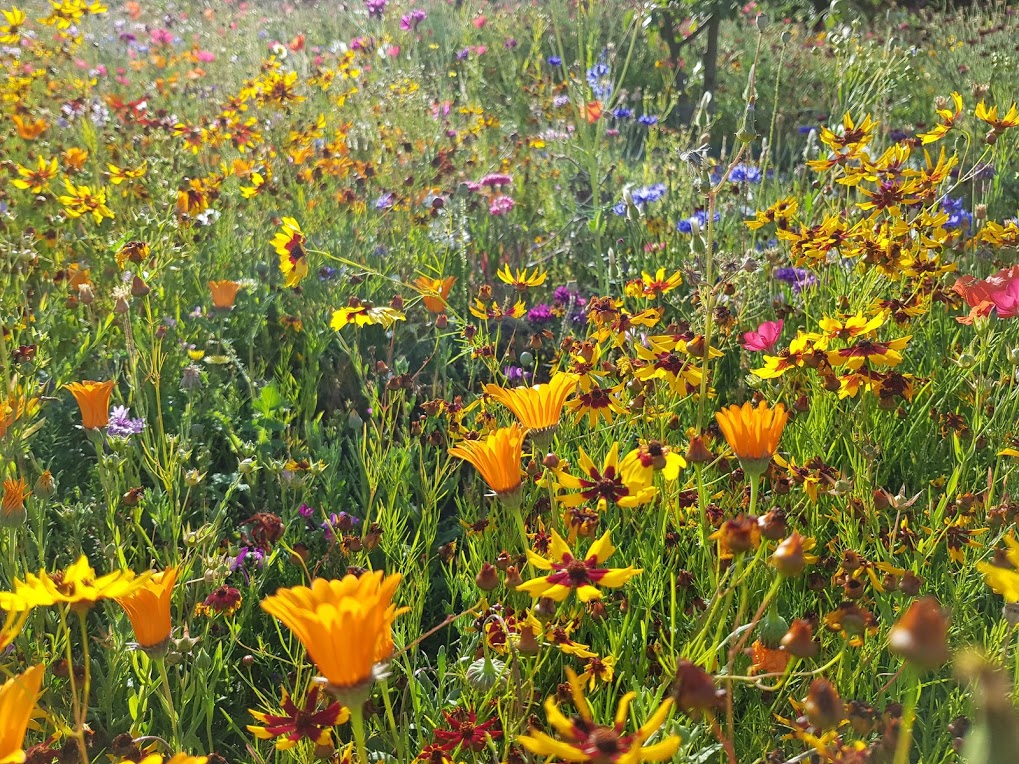We’re on a journey to brighten up our estates: to fill them with wildlife and pictorial meadows that offer stunning bursts of colours for our customers, communities and passer-bys.
In 2015 we tried planting our first ‘in house’ meadow – we prepared the ground and sowed the seed, but sadly, it did not ‘take’ and we were left with bare earth. But we took the learning from this early experience and were not daunted by the setback!
In 2016 we looked again – but this time hooked up with Green Estate and their Pictorial Meadows team. So, what makes a Pictorial Meadow a Pictorial Meadow and not one of their beautiful natural cousins? Well, Green Estate, who are pioneers and experts in the approach, have developed meadow seed mixes which will survive and thrive in nutrient rich urban soils, which wild meadow mixes struggle with. They also establish quickly and give a real explosion of colour across a long growing season.
Their Pictorial Meadows team supported us with seed selection, site preparation and sowing for two existing ‘grassed’ sites. And, this time, they grew and were beautiful.
It wasn’t just us that thought that – on a number of site visits through spring and summer I was blown away by the response from our customers. From a lady wandering by who shouted across, “These are fantastic, do more!”, to a little girl sat in the middle of one of the meadows making a posy of flowers, to a gentleman who approached me to say how much he loved them.
Another real feature of the meadows was their hum from the many bees and other insects enjoying the profusion of flowers… but boy, they are difficult to photograph, especially on an iPad.
The benefits didn’t end with our customers and the local bees, but to our interests at South Yorkshire Housing Association. We only had to cut the meadows once a year in the autumn rather than many grass cuts across the growing season meaning we saved significant funds by reducing trips to site and allowing us to use those teams elsewhere across our estate.
So, where have we gone since our early meadows? We continue to manage those first sites as urban meadows and have turned over a number of other sites to meadow management too. Our NEAT Team have also upskilled meaning we can do more of the meadow management work ourselves. Our early meadows were sowed with annual seed mixes, but in 2018 the team planted five sites with perennials, and these are now in their second year of flowering. Meadow isn’t the right solution for every site, but gives us another weapon in our armoury, and we are always on the lookout for other suitable sites.

And more recently we have also started introducing Pictorial Meadows in our new housing developments. Our new development at Slingsby Place, just across the road from Green Estate, boasts a swathe of meadow. I took one of our Board Members to see the site last year, and he was simply blown away by its beauty.
So, are urban meadows a replacement for wild meadows? No, they are definitely not, and some say they are a cheat, or even a step backwards from grass. But an urban housing estate is not a chalk hillside in The Downs and I see them as ‘horses for courses’. We will continue our journey with Pictorial Meadows and other approaches, which make our estates a nicer place to live for our customers and wildlife alike.
Gordon Watts, Sustainability Manager


